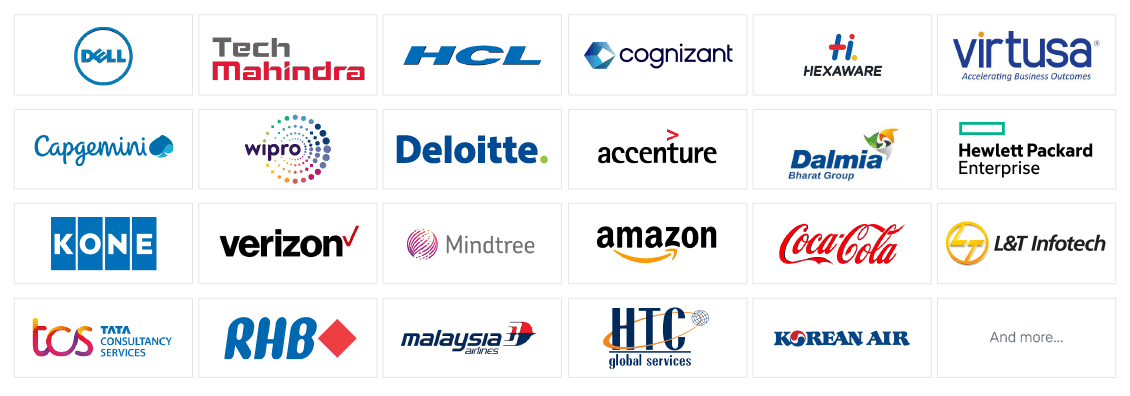Our Alumni Work At

"AI to contribute $16.1 trillion to the global economy by 2030. With 133 million more engaging, less repetitive jobs AI to change the workforce." - (Source). Data Science with Artificial Intelligence (AI) is a revolution in the business industry.. AI is potentially being adopted in automating many jobs leading to higher productivity, less cost, and extensible solutions. It is reported by PWC in a publication that about 50% of human jobs will be taken away by the AI in the next 5 years.
There is already a huge demand for AI specialists and this demand will be exponentially growing in the future. In the past few years, careers in AI have boosted concerning the demands of industries that are digitally transformed. The report of 2018 states that the requirements for AI skills have drastically doubled in the last three years, with job openings in the domain up to 119%.
FAQs for Professional Data Analytics
While there are a number of roles pertaining to Data Professionals, most of the responsibilities overlap. However, the following are some basic job descriptions for each of these roles.
As a Data Analyst, you will be dealing with Data Cleansing, Exploratory Data Analysis and Data Visualisation, among other functions. The functions pertain more to the use and analysis of historical data for understanding the current state.
As a Data Scientist, you will be building algorithms to solve business problems using statistical tools such as Python, R, SAS, STATA, Matlab, Minitab, KNIME, Weka etc. A Data Scientist also performs predictive modelling to facilitate proactive decision-making. Machine learning algorithms are used to build predictive models using Regression Analysis.A Data Scientist has to develop expertise in Neural Networks and Feature Engineering.
A Data Engineer primarily does programming using Spark, Python, R etc. It often complements the role of a Data Scientist.
A Data Architect has a much broader role that involves establishing the hardware and software infrastructure needed for an organisation to perform Data Analysis. They help in selecting the right Database, Servers, Network Architecture, GPUs, Cores, Memory, Hard disk etc.
Different organisations use different terms for Data Professionals. You will sometimes find these terms being used interchangeably. Though there are no hard rules that distinguish one from another, you should get the role descriptions clarified before you join an organisation.
With growing demand, there is a scarcity of Data Science professionals in the market. If you can demonstrate strong knowledge of Data Science concepts and algorithms, then there is a good chance that you can carve a successful career in this domain.
360DigiTMG provides internship opportunities through Innodatatics, our USA-based consulting partner, for deserving participants to help them gain real-life experience. This greatly helps students to bridge the gap between theory and practice.
There are plenty of jobs available for Data Professionals. Once you complete the training, assignments and the live projects you can enroll for placement guarantee. We help our students in resume preparation. Once the resume is ready we will float it organisations with whom we have formal agreements on job placements.
We also conduct webinars to help you with your resume and job interviews. We cover all aspects of post-training activities that are required to get a successful placement. After placement we provide technical assistance for the first project on the job.
After you have completed the classroom sessions, you will receive assignments through the online Learning Management System that you can access at your convenience. You will need to complete the assignments in order to obtain your Data Scientist certificate.
If you miss a class, we will arrange for a recording of the session. You can then access it through the online Learning Management System.
We assign mentors to each student in this programme. Additionally, during the mentorship session, if the mentor feels that you require additional assistance, you may be referred to another mentor or trainer.
No, The cost of the certificate is included in the programme package.

Why are Analytics Internships important for professionals?
Internships are an ideal way to kick-start a career in any sector. However, for professionals to work in data-driven analytics, it is also beneficial to have relevant experience and knowledge of the domain. Therefore, an internship in analytics would be a potent add-on to starting a career in data analytics. You will get familiar with the latest data science tools and technologies and gain experience working on industry-level projects, which will ultimately help you advance in your career.

What will be the salaries for Data Analytics in USA?
Salaries in Data Analytics vary based on experience. In the USA, freshers might start with a basic pay of around $48,000 per year, while experienced professionals can earn between $84,000 and $120,000 per year. Entry-level positions often require strong analytical skills and proficiency in data tools. A Junior Data Analyst can earn an average salary of $70,933 per year. Senior Data Analysts can earn significantly more, with top salaries reaching $24.1 Lakhs per year.

How to get jobs in the Data Stream industry through 360DigiTMG?
A data scientist's work is intellectually challenging, technologically advanced, and rewarding. Those considering data science for their career tune in to 360digiTMG course training. All you need to do is start enroll in your subject, take classes, complete assignments, accomplish the final project, and get certification to build your resume. Then, start applying for the jobs with the skills gained by us. Therefore, the job is assured!

What will be the career track for Analytics?
Becoming a data analyst is a stellar career option if you're looking for something stable and long-term. Depending on your goals and objectives, you could advance into data science, management, consulting, or a more specialized data career. As a data analyst, you can make a high salary and work in various areas, including food, technology, business, the environment, and the public sector. You can build a long and successful career in this field with the relevant skills and training.
Talk to your program advisors today!
Get your profile reviewed

